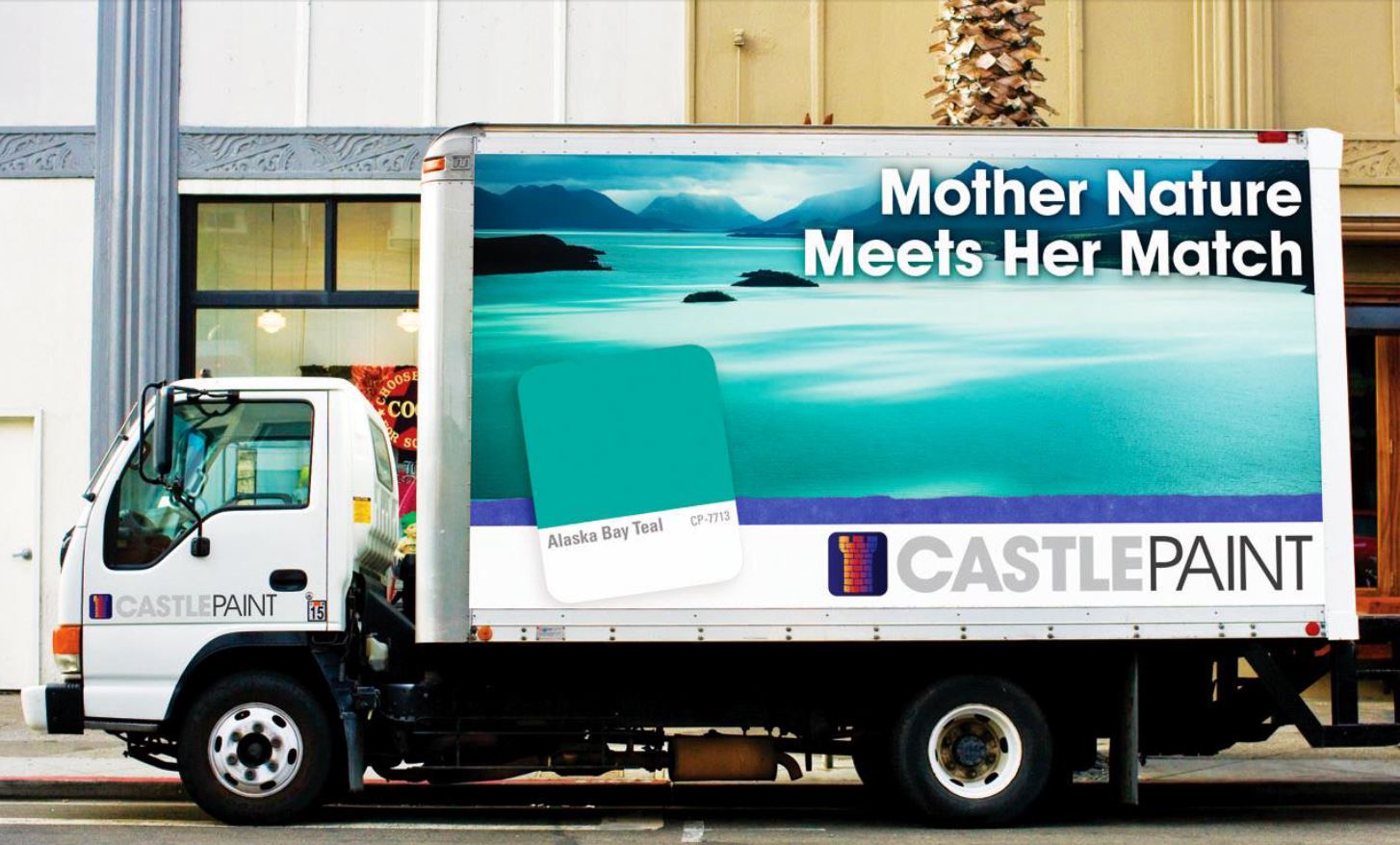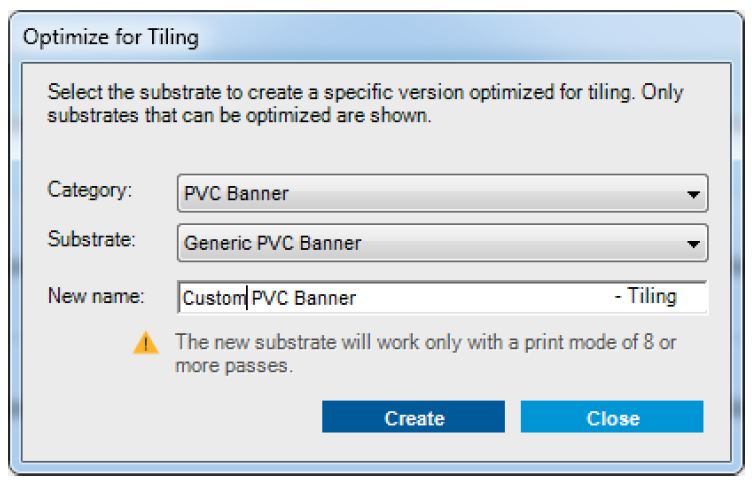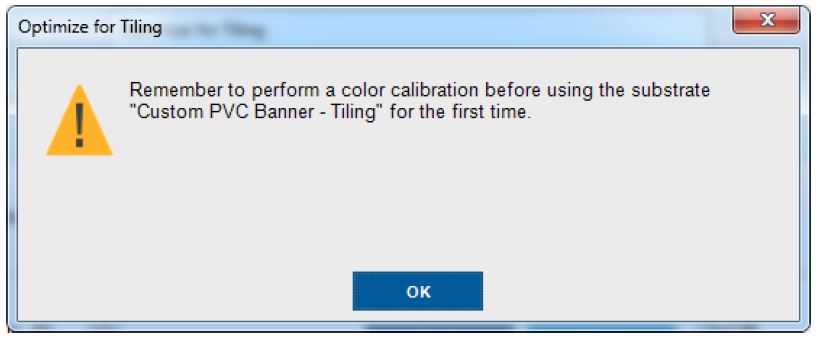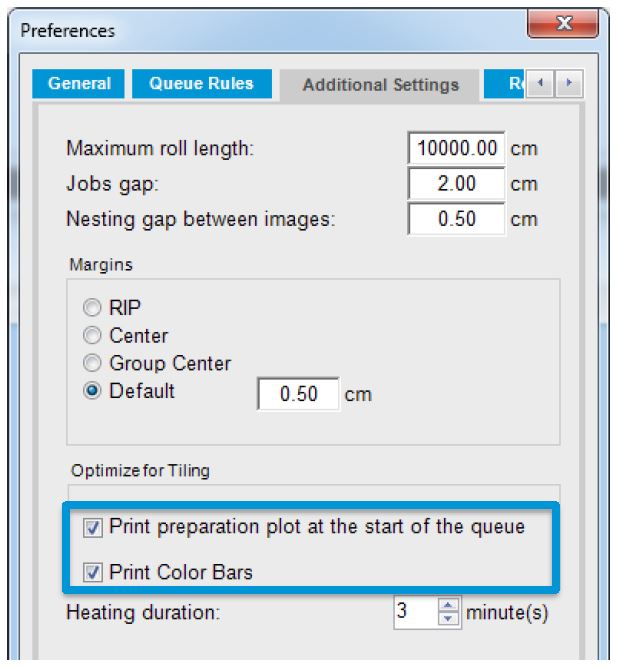
Good practices to ensure correct color consistency for tiling applications.
Tiling applications: consistent colors between tiles.
When printing tiles, good color consistency between tiles is necessary, especially for applications like vehicle wrapping, billboards, wall coverings, etc. HP Latex 3x00/1500 printers include a tiling mode feature to get the best possible consistency on tiling applications.
Do you want to print with the best color consistency for tiling applications? Follow these recommendations to learn how.
Tiling mode: Optimize your substrates for tiling applications.
Optimizing your substrates for tiling will produce the best consistency for your application.
How does it work?
Color is optimized for tiling applications within a single printer, within a single job, and on the same substrate roll. Tiling mode:
• Creates a new media preset, based on existing ones, with tiling-specific optimizations.
• Does not modify the existing presets.
• Reduces color variations during long printing runs to a maximum color difference <= 1dE 2000 (95% of color)1.
• Optionally adds a preparation plot and color bars to ensure system stability during long runs.
Tiling mode supports the following print modes and substrates:

How to optimize your substrate for tiling
STEP 1. Go to Internal Print Server
In the printer IPS / front panel, select Substrate > Optimize for tiling.

STEP 2. Select the substrate
Select the substrate you want to optimize for tiling. Only substrates that can be optimized for tiling will appear in the list.

STEP 3. Perform a color calibration
This step is necessary to ensure a color consistent reprint.

Go to Substrate > Color Calibration and select Set color reference.
 Job preparation
Job preparation
After the completion of these three steps, the substrate is optimized for tiling. A beginning of job preparation plot (A) and sideway color bars (B) are automatically added to your jobs.
 Both the preparation plot and the color bars can be removed from the Preferences menu.
Both the preparation plot and the color bars can be removed from the Preferences menu.
Presets that have not been optimized for tiling will not include the preparation plot and the color bars. These elements are only added to your tiling-optimized substrate.
 How to reprint with consistent colors using a tiling-optimized substrate
How to reprint with consistent colors using a tiling-optimized substrate
Reprints are one of the most common scenarios when printing: a print could get damaged during transportation or installation, customers might need more copies after some time…
Reprinting with consistent colors is also possible using a tiling-optimized substrate. Color calibration in step 3 is mandatory for this process.
Do you want to reprint with consistent colors?
Check the cookbook How to reprint with consistent colors on the same printer with the HP Latex 3000 Serie and HP Latex 1500
1 Color variation inside a printed job has been measured to a maximum color difference ≤ 1 dE2000 (95% of colors) when printed with tiling optimized substrates in “Optimize for tiling” mode. Tested on Ahlstrom 5087 wallpaper under stable printing conditions with a stable substrate and a nominal printer. Reflective measurements on a 943 color target under CIE standard illuminant D50, and according to the standard CIEDE2000 as per CIE Draft Standard DS 014-6/E:2012. 5% of colors may experience variations above the specs mentioned. Backlit substrates measured in transmission mode may yield different results.










